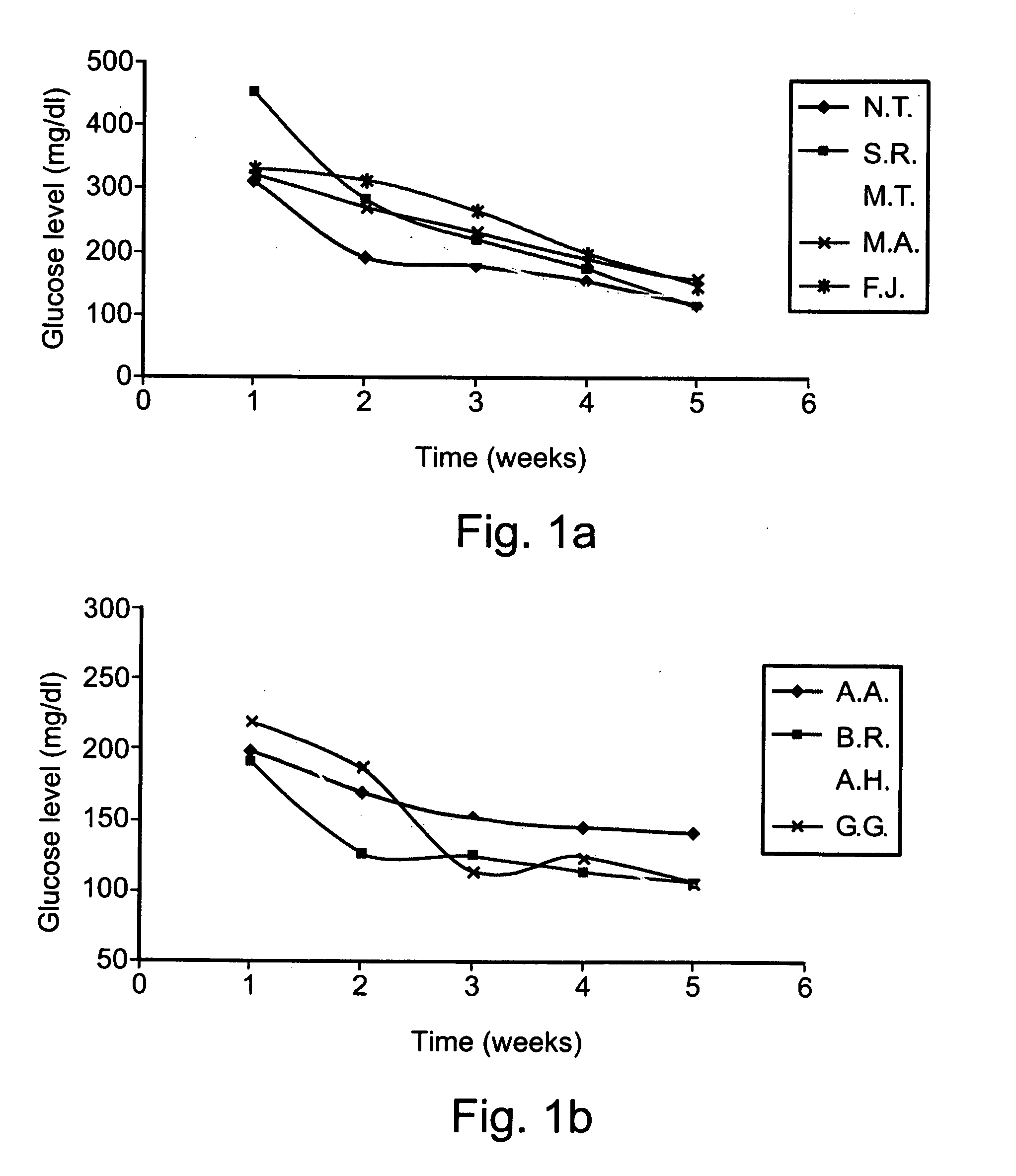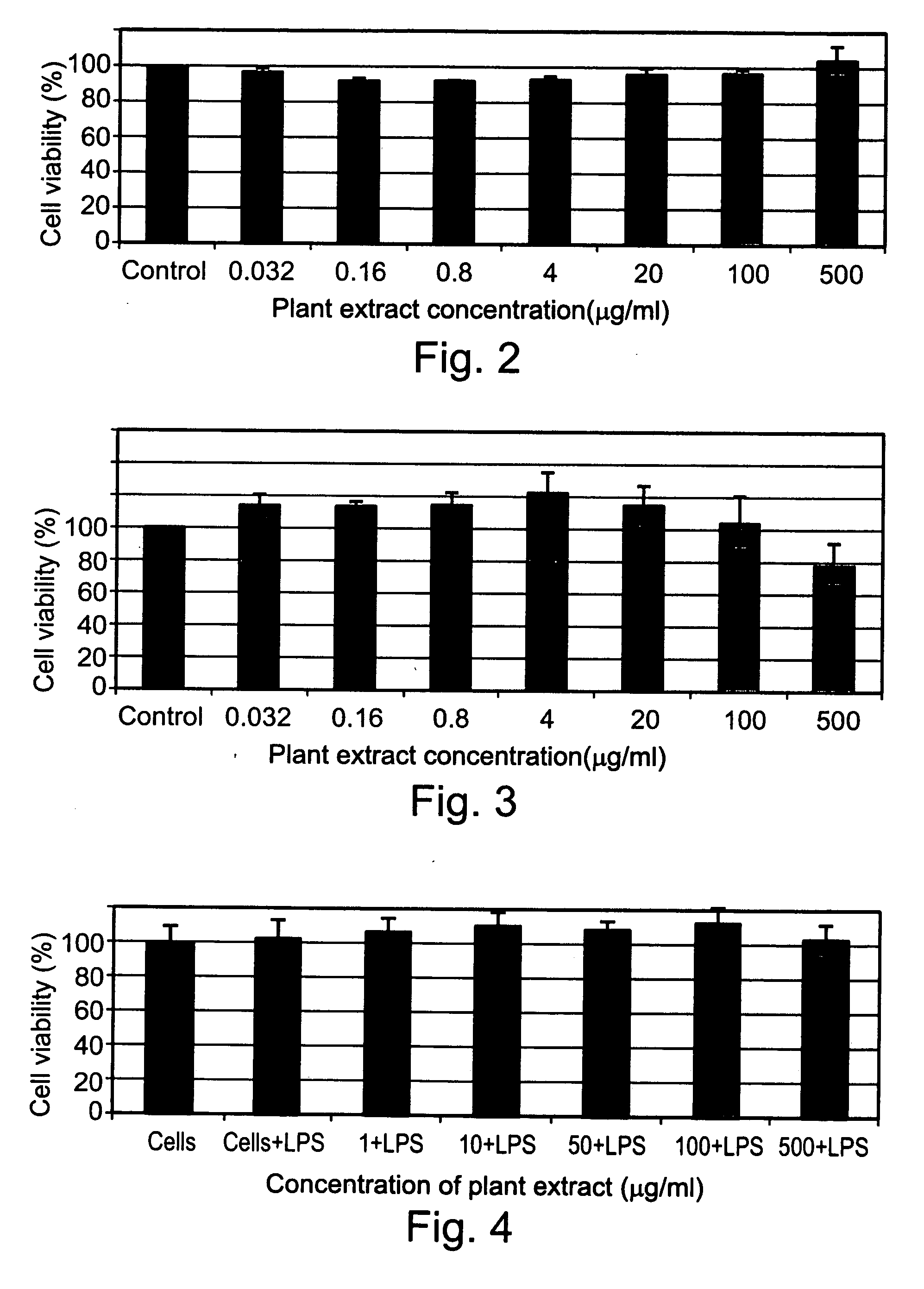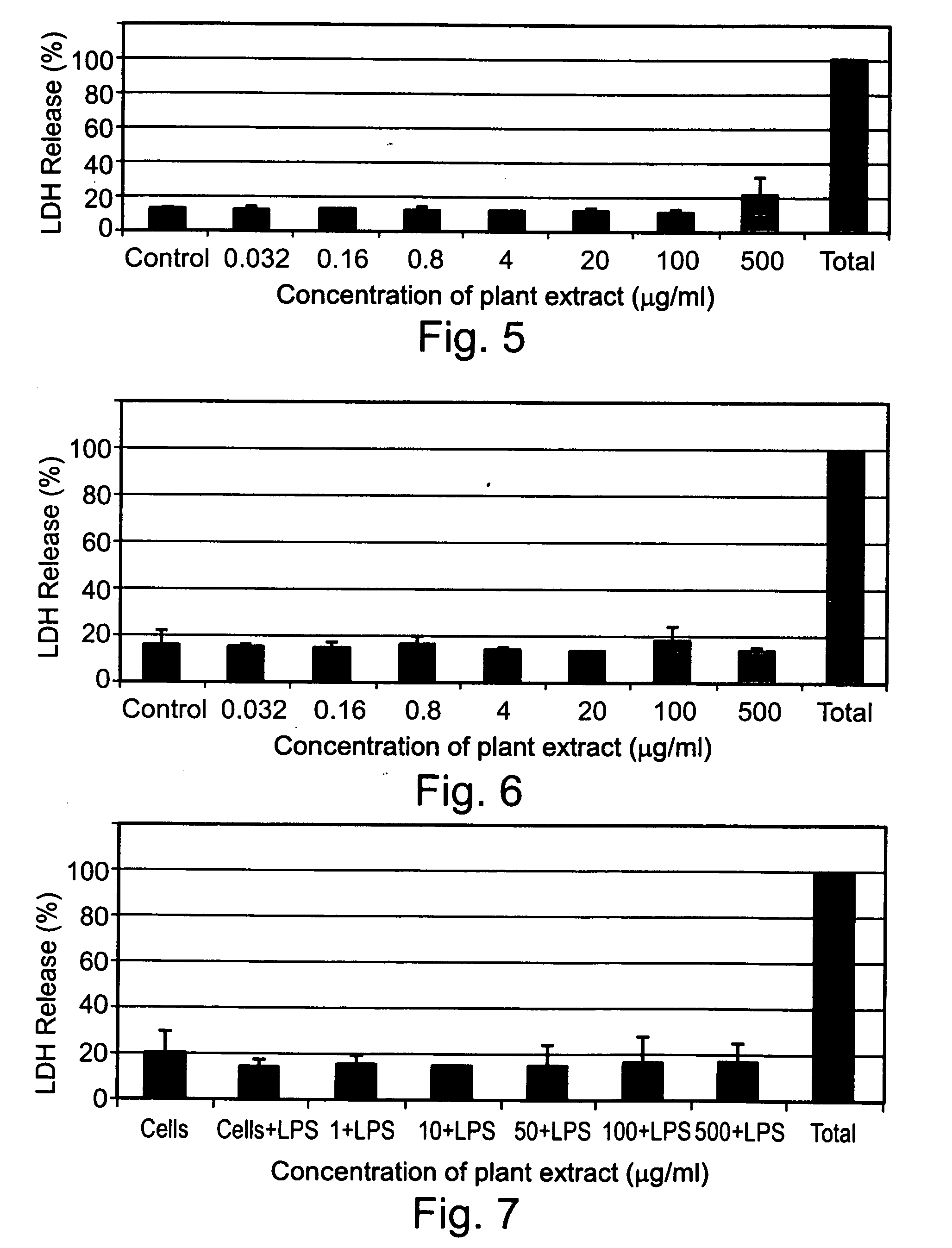Compositions derived from portulaca oleracea l. and methods of using same for modulating blood glucose levels
a technology of portulaca oleracea and compositions, applied in the field of compositions from portulaca oleracea l., can solve the problems of impaired glucose utilization by peripheral tissues, excessive glucose production, and affecting metabolic homeostasis
- Summary
- Abstract
- Description
- Claims
- Application Information
AI Technical Summary
Benefits of technology
Problems solved by technology
Method used
Image
Examples
example 1
Purification, Isolation, and Identification of Bioactive Components from Portulaca oleracea L. (Portulaca oleracea L.)
[0173] In initial experiments, the extraction of Portulaca oleracea L. was effected in stages, using solvents that vary from non-polar to polar. Two main preliminary procedures were developed and compared for efficacy. Results obtained thereby were then utilized in the development of a standard extraction procedure.
example 1a
[0174] Repeated Soxlett Extraction
[0175] Experimental Procedure
[0176] Materials—Solvents were purchased from Frutarom Ltd. Haifa, ISRAEL or from J. T. Baker, Deventer Holland and were analytical grade unless otherwise specified. D-glucose monohydrate was purchased from Riedel-de Haen, Seelze Germany. Additional research chemicals were purchased from Sigma-Aldrich, Milwaukee, U.S.A.
[0177] Soxlett extraction—20 g of ground, dried Portulaca oleracea L. material were placed in a standard Soxlett extraction thimble and the material was extracted with 250 ml of solvent as further described below. Extraction was effected five times, each time using one of the following five different solvents of increasing polarity: hexane, ethyl acetate, dichloromethane (DCM), methanol, and water. Extraction was continued for two full cycles (i.e., the thimble was filled with solvent and emptied twice) under reflux of the solvent. Following extraction, the solvent was evaporated in a vacuum rotavapor a...
example 1b
[0185] Extraction of Portulaca oleracea L. Active Components by the Room Temperature (RT) Method
[0186] Materials and Experimental Procedures
[0187] RT extraction—100 grs of dried, ground Portulaca oleracea L. material were placed in a glass beaker with 1 l of solvent and stirred at room RT for 24 hours (hrs). Extraction was effected five times in parallel using one of five different solvents of increasing polarity: hexane, ethyl acetate, DCM, methanol, and water. Following extraction, the plant material was filtered out, the solvent of the filtrate was evaporated in a vacuum rotavapor, and the dried extract was collected and weighed. The residual plant material was dried in a drying oven at 65° C. prior to additional extraction. The dry extracts were collected and analyzed by TLC, as described in Example 1a.
[0188] Glucose Adsorption through the Intestines—See Example 4 below.
[0189] Glucose Transport into the Cell—See Example 4.
[0190] Results
[0191] Extraction yields—Table 4 belo...
PUM
 Login to View More
Login to View More Abstract
Description
Claims
Application Information
 Login to View More
Login to View More - R&D
- Intellectual Property
- Life Sciences
- Materials
- Tech Scout
- Unparalleled Data Quality
- Higher Quality Content
- 60% Fewer Hallucinations
Browse by: Latest US Patents, China's latest patents, Technical Efficacy Thesaurus, Application Domain, Technology Topic, Popular Technical Reports.
© 2025 PatSnap. All rights reserved.Legal|Privacy policy|Modern Slavery Act Transparency Statement|Sitemap|About US| Contact US: help@patsnap.com



